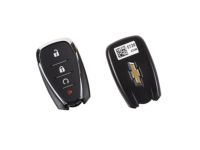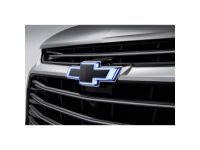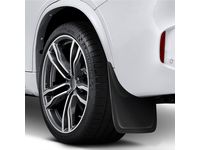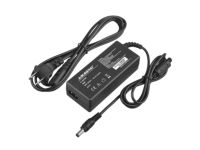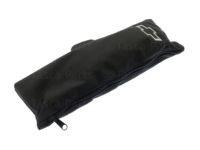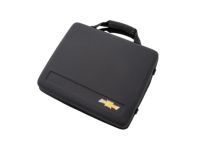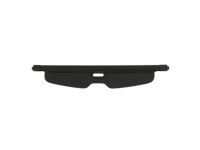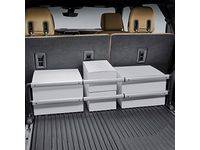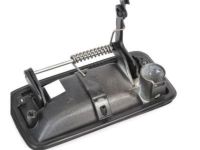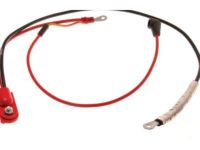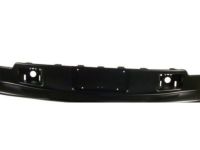Why choose GMPartsGiant
- Large Inventory
The best site to buy Chevrolet Blazer genuine parts for years has been GMPartsGiant.com. We're the best online parts and accessory store for your Chevrolet Blazer. GMPartsGiant.com offers a large parts and accessory inventory to cover all your vehicle's repairs. Feel free to browse through our genuine Chevrolet Blazer parts and accessory catalog to find all your vehicle's needs.
- Fast Shipping Times
All of our Chevrolet Blazer auto parts and accessories are expedited directly from verified dealers and backed by the manufacturer's warranty. Our experienced team ensures the orders are packed to provide quick transit times. The majority of the orders are shipped out within a couple of business days to get the parts out to you as fast as possible.
- Low Prices
Our low prices say it all. You can rest assured that you will always receive unbeatable prices on OEM Chevrolet Blazer parts. Our giant inventory is beyond compare and has everything you need at an extraordinary value not found anywhere else. Whether you're restoring an old vehicle or upgrading the performance of your vehicle you can count on the quality of our products without hurting your bank account.
Popular Genuine Chevrolet Blazer Parts
- Engine Parts View More >
- Front Suspension, Steering Parts View More >
- Fuel System, Exhaust, Emission System Parts View More >
- Brakes Parts View More >
- Transmission - Automatic Parts View More >
- Frames, Springs, Shocks, Bumpers Parts View More >
- Cooling System, Grille, Oil System Parts View More >
- Front Axle, Front Suspension, Steering Parts View More >
Shop Genuine Chevrolet Blazer Parts with GMPartsGiant.com
The Chevrolet Blazer, a mid-size crossover SUV produced by General Motors, made its debut in January 2019. Notable for its diverse engine range, the Blazer offers the 2.0 L LSY I4 turbo, the 2.5 L LCV I4, and the powerful 3.6 L LGX V6. The standard 2.5 L I4 engine in the U.S delivers 144 kW (193 hp), while the optional 3.6 L V6 engine amps up the power with 227.5 kW (305 hp). In 2020, a 2.0 L turbocharged I4 version further expanded the lineup. Equipped with GM's 9-speed 9T50 automatic transmission, the Blazer excels in acceleration and handling. The V6 model impressively completes a 0-60 mph sprint in 6.6 seconds, demonstrating agility through turns and well-controlled body roll. Beyond performance, the Blazer prioritizes comfort, with supportive front seats and rear seats set at a comfortable angle and height. Dimensions-wise, the Blazer measures 191.4 inches in length, 76.7 inches in width, and 67.0 inches in height, weighing in at 3,810 lb. A larger three-row version is also available. The SUV stands out with its feature-rich design, including the Chevrolet Infotainment 3 system with an eight-inch touchscreen, Apple CarPlay and Android Auto integration, OnStar with 4G LTE Wi-Fi capabilities, and alloy wheels. Optional features like remote start, a Bose premium audio system, GPS navigation, and a power tailgate enhance its appeal. Renowned for its refined ride quality, agile handling, attractive infotainment system, and powerful optional V6 engine, the Chevrolet Blazer has garnered significant popularity among SUV enthusiasts.
Chevrolet Blazer, like other vehicles, experiences mechanical problems over time, with engine issues and shifting problems being the most common. Engine problems often present as a lit check engine light, engine misfires, difficulty starting, intermittent stalling, rough idling, backfiring, reduced power, and decreased gas mileage. These symptoms suggest possible failure of the crankshaft, fuel injector, spark plug, or exhaust valve, which may require professional attention or self-inspection. Shifting problems manifest as mismatched indicator light or cable and gear, inability to remove the key from the ignition or turn the Chevrolet Blazer off, start in other gears besides park or neutral, or an immovable gear selector after starting the vehicle. These symptoms indicate a likely need for a new shift cable. Other less noticeable yet critical components like air filters also demand regular maintenance. They may become clogged after filtering dust, dirt, debris, pollen, and other pollutants from entering the passenger compartment, thus compromising their efficiency.
Genuine parts undergo the strict quality control tests, so you can be sure they're of top quality and durability. Our website is the best online store for when you need any genuine Chevrolet Blazer parts, including Brakes, Rear Axle, Propeller Shaft, Wheels, Tires, Interior Trim, Front Seat Trim, Seat Belts, Front End Sheet Metal, Heater. We offer a wide range of Chevrolet Blazer parts, such as Body Moldings, Sheet Metal, Rear Compartment Hardware, Roof Hardware, Transmission - Manual at unbeatable prices. We will help provide you with a worry-free shopping experience at the most competitive prices. In addition, all OEM parts, like Rear Body Structure, Moldings & Trim, Cargo Stowage, Transfer Case are backed by the manufacturer's warranty.
Chevrolet Blazer Parts Questions & Answers
- Q: How do you remove the inside handle, outside handle and lock cylinder, and latch from a door on Chevrolet Blazer?A: For the beginning, in case it equipped with power components model, you need to remove the inside handle disconnecting cable from negative battery terminal. After that, take off the door trim panel and water shield along with window glass in full up position. Remove lock rod and drill out rivets securing the handle to the door frame. Finally, remove the handle itself. The reinstallation is as simple as reversing of what has been done during removal. To remove an outside handle or lock cylinder start by first removing a door trim panel and water shield. Then disengage handle and lock cylinder from lock rods and remove handle-to-door nuts. Now pull out handle free from below lock cylinder off it completely. Installation is simple-just reverse removal steps above. To remove latch assembly at first disconnect locking knob rod, then inside handle rod, plus finally inside handle lock rod all from latch assembly located on inside of door panel; thus the next thing- is removing retaining screws of such latch assembly so as to pull this assembly out unhamperedly away from door completely. Reinstalling is easy too; it's just a matter of reversing order of disassembling through which they were removed initially during uninstallation process nut+rod.
- Q: How to inspect and replace battery cables on Chevrolet Blazer?A: Periodically inspect the entire length of each battery cable for damage, cracked or burned insulation, and corrosion. Poor battery cable connections can cause starting problems and decreased engine performance. Check the cable-to-terminal connections at the ends of the cables for cracks, loose wire strands, and corrosion. The presence of white, fluffy deposits under the insulation at the cable terminal connection is a sign the cable is corroded and should be replaced. Check the terminals for distortion, missing mounting bolts or nuts, and corrosion. If only the positive cable is to be replaced, be sure to disconnect the negative cable from the battery first. Disconnect and remove the cable, making sure the replacement cable is the same length and diameter. Clean the threads of the starter or ground connection with a wire brush to remove rust and corrosion, and apply a light coat of petroleum jelly to the threads to ease installation and prevent future corrosion. Attach the cable to the starter or ground connection and tighten the mounting nut securely. Before connecting the new cable to the battery, make sure it reaches the terminals without having to be stretched. Connect the positive cable first, followed by the negative cable, and tighten the nuts. Apply a thin coat of petroleum jelly to the terminal and cable connection.
- Q: How do you remove a mirror on Chevrolet Blazer?A: To remove the side view mirrors, start by disconnecting the negative cable from the battery. Then, remove the door trim panel and the mirror-to-door retaining nuts. If the side view mirror is a power mirror, unplug the electrical connector as well. Finally, lift off the mirror assembly. To install the side view mirrors, simply follow the steps in reverse order.
- Q: How do you remove and install the front and rear bumpers on Chevrolet Blazer?A: Front Bumper Removal,Remove the radiator grille. Detach the bumper after removing bumper-to-chassis bolts. On 2000+ Bravada, Envoy, and Xtreme models, disconnect fog lights. Remove bolts from the bumper brace-to-frame and detach parking lights from bumper. Rear Bumper Removal: Remove license plate light housing and disconnect lamp lead(s). Detach bumper after removing bumper-to-frame bolts. For both: Installation is reverse of removal.



















































